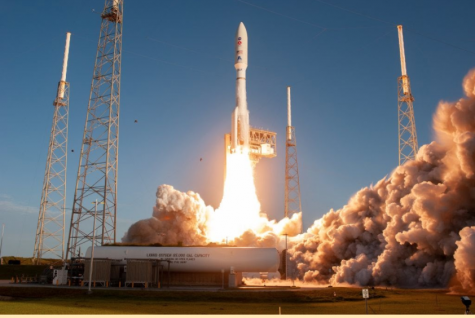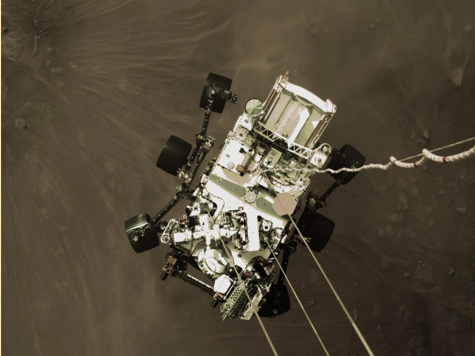Life beyond Earth: Mars
The sound of volcanic eruptions can be heard as gases spew into the Martian atmosphere. In the distance, water floods the grounds of the infamous red soil in forms of lakes and rivers, some possibly holding microbial life. As years stretched forward, Mars’ weak gravity wasn’t able to sustain liquid water, leading it to evaporate into the depths of space. Three-and-a-half billion years later, scientists dig for clues in the pursuit of alien life by sending satellites and rovers to Mars. On Feb. 18, the Perseverance Mars rover and Ingenuity helicopter landed on the Martian surface at Jezero Crater.
The process of getting Perseverance and Ingenuity to Mars was a long task but not in vain. The Mars 2020 mission launch (with Perseverance and Ingenuity onboard) was delayed three times due to issues during testing but on July 30, 2020, it set sail for our neighbor planet. After the seven-month journey, Perseverance began the next phase of its mission: the “seven minutes of terror”. This describes the landing process in which it free falls, releases a parachute and a device lowers down Perseverance with cables, about 20 meters from the surface. This entire process is preprogrammed into the machines, so if anything went wrong, it would’ve been mission over. Luckily, this didn’t happen so Perseverance and Ingenuity can jump to their next mission phase and explore the Jezero Crater and Martian atmosphere.

Five years of debate with over 60 candidate locations, scientists around the world finalized on the Jezero Crater. This is an ancient delta and was spotted to have clay deposits which are known to only form with the presence of water and where there is water, there is life (or at least to our current understanding). When Perseverance descended upon this site, it not only captured the first ever video recording of a landing on another planet but it is the first to record sound on Mars. Additionally, Perseverance took high-resolution pictures of the 200-foot cliffs, mysterious rocks and other geological surroundings that specialists are now studying in order to determine the history of Jezero Crater and Mars.
Meanwhile the Ingenuity helicopter is still stored in the Perseverance rover’s belly while scientists prepare for its five-flight series over the course of 30 days. With its mission, they hope to successfully fly the first aircraft in a foreign atmosphere and gather further understanding of its dynamics. This may provide insight into future missions and colonization technologies.

Over the next one Martian year (or two Earth years), Perseverance will fulfill its mission by drilling into regolith and collecting samples that future missions will return back to Earth in 2031. These will be the first Martian samples to be brought to Earth. All in all, the Mars 2020 mission is an enormous milestone toward understanding Mars and discovering the existence of past or present alien life.







